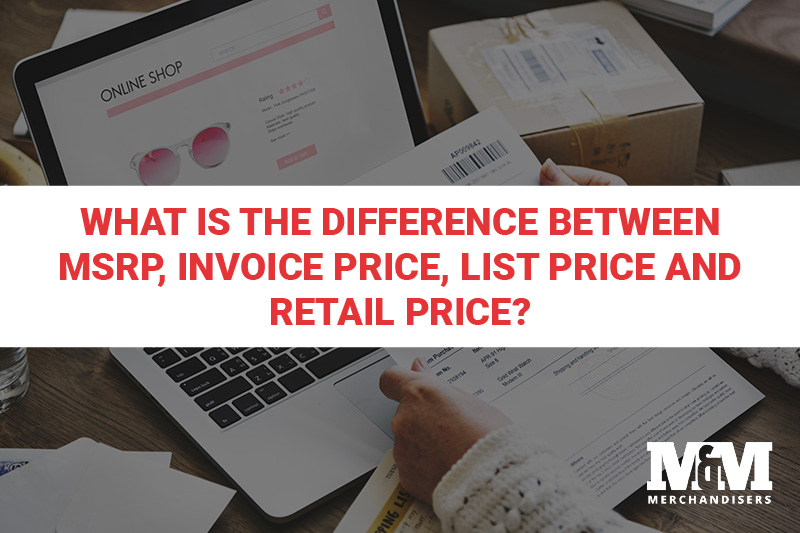What is the Difference Between MSRP, Invoice Price, List Price and Retail Price?

General merchandise wholesale distributors can have a hard time determining the price points for their inventory. As a retailer, merchandiser, or pawn shop owner, you want your inventory to sell at the best price possible. If you are a new store owner that sells merchandise, you may have come across multiple inventory pricing options. Below, we will break down common price points used by general merchandise wholesale distributors to help you better discover which one will work best for your business.
Want more flexibility in pricing for your store?
Become a Dealer with M&M Merchandisers to buy products wholesale!
What is MSRP?
MSRP or manufacturer’s suggested retail price is likely to be the most well-known benchmark for setting merchandise prices. In a nutshell, MSRP is the price suggested or recommended by the product manufacturer. Retailers who use this pricing convention will often sell a specific product or item at a price lower than the MSRP to quickly sell inventory. It is worth noting that as a retailer, you can’t sell products to match the manufacturer’s suggested retail price.
The MSRP is used mainly as a benchmark or guide that offers you insight into how valuable a specific product is. The MSRP pricing option was established to provide uniform pricing across retailers. The manufacturer’s suggested retail price is also called the list price or sticker price. MSRP is often used to price high-priced products and goods such as automobiles, RVs, boats, electronics, and appliances.
As mentioned previously, if you want to sell certain products quickly, setting your prices below MSRP will more likely attract customers to make a purchase. If, on the other hand, you have a high-demand product, you can quickly sell the product with a price higher than the manufacturer’s suggested retail price.
Related: What Does MSRP Mean In Wholesale and Retail?
How Are MSRPs Set?
As the name suggests, the MSRP is determined beforehand by the producer or manufacturer of the product. The manufacturer’s suggested retail price takes into account all the costs associated with the production and selling of a product. MSRPs are set up in a way that allows the producer, wholesaler, and retailer to make a profit on the product.
What is Invoice Price?
The invoice price of a product is what a business pays to a wholesaler to purchase the product for resale. The invoice price can be a gauge by which a general merchandise wholesale distributor can set prices for products in their inventory.
With invoice pricing, the wholesale distributor calls the shots and often sets an invoice price that reflects labor and material costs to produce the product, shipping fees, state sales tax, and the wholesaler’s desired profit margin. In many instances, wholesale distributors will lower the invoice price on individual products for retailers by selling the product in bulk.
The invoice price, however, often doesn’t take into account the costs associated with the packaging of the products or the cost of utilities and rent that the retailer must pay. To compensate for this and maintain a decent profit margin, the retailer may include a retail price in addition to the invoice price.
Related: How to Buy Wholesale Products [Guide to Resale Business]
What is List Price?
The list price, or MSRP is set by manufacturers to let wholesalers and retailers know the value and worth of a product. Producers must avoid the mistake of under or over-pricing the product, and should be priced to attract sales while delivering a profit. The list price is what distributors and wholesalers will use in setting the prices for products in their stores.
Discounting a list price as a sales price is a great way to entice buyers to buy items that aren’t selling. A discounted list price is also a good way to test out the reception of a new product.
Be aware that discounted list pricing can devalue a product’s worth in the eyes of consumers. Once you place “sales pricing” on certain items, customers may not be willing to purchase items at their original list price after the conclusion of a sale.
What is Retail Price?
The retail price is often a markup of the invoice cost of a product. Remember that the invoice price only indicates the price a retailer paid to the wholesaler. It doesn’t factor in the other costs of running a business and selling products. The markup added to the invoice price (the retail price) creates a profit margin that takes into account the added costs of doing business (i.e. rent and utilities).
How do you know how much your products are worth and how to figure out how much to charge to have a decent profit margin? A profit margin is the profit retailers earn when products are sold. As a rule of thumb, a profit margin of 30-50 percent is recommended for wholesalers and a profit margin of 55-65 percent is average for direct-to-customers businesses.
To learn what your profit, or retail margin is, the following calculation can be used:
Retail Price - Cost / Retail Price = Retail Margin %
The number you get to calculate your profit margin can then be used to determine your retail price:
Wholesale Price / (1 - Markup Percentage) = Retail Price
How Are MSRP, Invoice Price, List Price and Retail Price Different?
General merchandise wholesale distributors should know the difference between MSRP, invoice, list, and retail pricing.
- Manufacturer suggested listing price or MSRP is used to establish more uniform pricing across stores where a particular product is sold by setting price points around how much the manufacturer suggests the product to be sold for. MSRP is best if you sell big-ticket items like cars, appliances, electronics, and designer apparel, or are reselling products at discount, such as in a pawn shop.
- The invoice price is the price established by a wholesaler on products a retailer buys to resell.
- The listing price is the same as MSRP, but unlike MSRP, retailers can use this price on products. If you work with a wholesale distributor, invoice and/or list price will likely be the best option.
- The retail price is what a manufacturer places on their products to sell to wholesalers and retailers. Retail price, however, adds on a profit margin that takes into account selling costs that are left out in invoice pricing. If you’re a seller and manufacturer or products, be sure to establish a retail price that most accurately represents the value of your goods.
Choosing the right pricing for your business is critical to your ability to sell. The one that will best work for your business will depend a lot on your business model and relationships with your manufacturers. Buying wholesale is an effective way to drive down the costs of inventory, allowing you more freedom in pricing without running into problems with the manufacturers.
Posted by Lois Haycock
Lois Haycock is a 20+ year retail and eCommerce veteran specializing in project management and business analysis of customer-facing systems and software. Lois is SVP of Digital Transformation at M&M Merchandisers. She also operates several eCommerce stores as well as an executive coaching business. Lois can be reached at lois.haycock@mmwholesale.com



